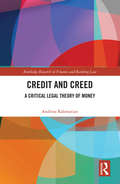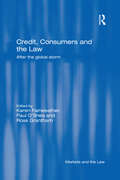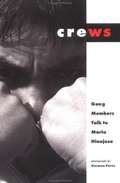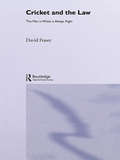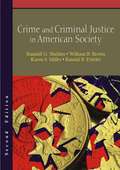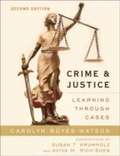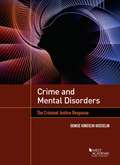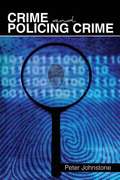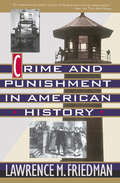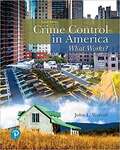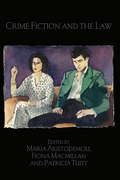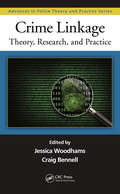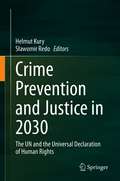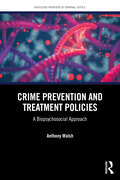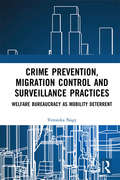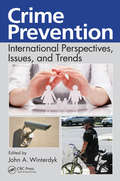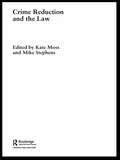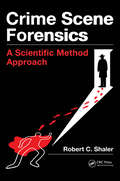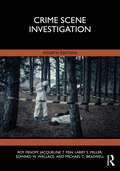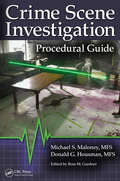- Table View
- List View
Credit Repair: Make a Plan, Improve Your Credit, Avoid Scams (13th Edition)
by Robin Leonard Amy Loftsgordon<p>Bad credit can prevent you from getting a mortgage, car loan, credit card, apartment, or even a job. It can also mean paying a bundle in rates and fees for any loans or credit you do get. <p>Use this comprehensive how-to manual to rebuild bad credit and protect improved credit. Learn how to: <p> <li>reduce expenses <li>create a workable budget <li>negotiate with creditors <li>improve your credit score, and <li>protect yourself against identity theft</li> </p>
Credit and Creed: A Critical Legal Theory of Money (Routledge Research in Finance and Banking Law)
by Andreas RahmatianMoney is a legal institution with principal economic and sociological consequences. Money is a debt, because that is how it is conceptualised and comes into existence: as circulating credit – if viewed from the creditor’s perspective – or, from the debtor’s viewpoint, as debt. This book presents a legal theory of money, based on the concept of dematerialised property. It describes the money creation or money supply process for cash and for bank money, and looks at modern forms of money, such as cryptocurrencies. It also shows why mainstream economics presupposes, but avoids an analysis of, money by effectively eliminating money from the microeconomic market model and declaring it as merely a neutral medium of exchange and unit of account. The book explains that money rather brings about and influences substantially the exchange or transaction it is supposed to facilitate only as a neutral medium. As the most liquid of all assets, money enables financialisation, monetisation and commodification in the economy. The central role of the banks in the money creation process and in the economy, and their strengthened position after the bank rescue measures in the wake of the financial crisis 2008-9 are also discussed. Providing a rigorous analysis of the most salient legal issues regarding money, this book will appeal to legal theorists, economists and anyone working in commercial or banking law.
Credit, Consumers and the Law: After the global storm (Markets and the Law)
by Paul O'Shea Ross Grantham Karen FairweatherConsumer law, particularly consumer credit law, is characterised by increasingly complex regulation in Western economies. Reacting to the Global Financial Crisis, governments in the UK, the EU, Australia, New Zealand and the United States have adopted new laws dealing with consumer credit, responsible lending, consumer guarantees and unfair contracts. Drawing together authors from all of these jurisdictions, this book analyses and evaluates these initiatives, and makes predictions as to their likely success and possible flaws.
Crews: Gang Members Talk to Maria Hinojosa
by Maria HinojosaHinojosa, a radio reporter, interviews boys and girls who have formed a 'crew'. They feel that it is better to be together than to be with family as they are feared more than respected.
Cricket and the Law: The Man in White is Always Right (Routledge Studies in Law, Society and Popular Culture)
by David FraserCricket, law and the meaning of life ... In a readable, informed and absorbing discussion of cricket’s defining controversies – bodyline, chucking, ball-tampering, sledging, walking and the use of technology, among many others – David Fraser explores the ambiguities of law and social order in cricket. Cricket and the Law charts the interrelationship between cricket and legal theory – between the law of the game and the law of our lives – and demonstrates how cricket’s cultural conventions can escape the confines of the game to carry far broader social meanings. This engaging study will be enjoyed by lawyers, students of culture and cricket lovers everywhere.
Crime And Criminal Justice In American Society
by Randall G. Shelden Karen S. Miller William B. Brown Randal B. FritzlerToday’s headlines vividly illustrate the importance of understanding aspects of the criminal justice system too often ignored. While the second edition of Crime and Criminal Justice in American Society includes the most recent statistics on the police, courts, and corrections, its provocative, current examples also spur critical thinking about justice in the United States. <p><p> The authors offer an alternative interpretation of criminal justice rarely presented in traditional textbooks or by the media. They encourage readers to examine their beliefs about crime, punishment, and the law. Discussions in the chapters about how African Americans, Hispanics, whites, women, juveniles, the rich, and the poor experience crime and the criminal justice system contribute context for understanding different viewpoints. The poor and minorities are the most likely to be caught in the net of criminal justice—but inequities have consequences for everyone. Reflection on various perspectives provides helpful input for assessing attitudes and for becoming actively involved with issues that have significant consequences.
Crime And Criminology, 14th Edition
by Sue Titus ReidProviding a unique blend of social science and legal research, Crime and Criminology offers students a broad context in which to study this dynamic subject, from its history and theories to its ongoing debates and discussions. Features: Provides students with a solid understanding of the integral relationship between the law and theories of criminal behavior Recent updates include the impact of terrorism and the economic downturn on the criminal justice system, victims with disabilities, healthcare and Medicare fraud, and the decriminalization of marijuana for personal use Expanded coverage of rehabilitation and deterrence, statutory rape, elder abuse, domestic violence, intimate partner violence, hate crimes, gun control, property crimes, and more Presents new research on families, twins, adoptees, and how brain function may be used to explain criminal behavior Integrates engaging pedagogy throughout
Crime And Justice: Learning Through Cases
by Carolyn Boyes-Watson Susan T. Krumholz Aviva M. Rich-SheaCrime and Justice offers a comprehensive introduction to the U. S. criminal justice system through nineteen historical and contemporary case studies. Each chapter opens with an engaging case, followed by an explanatory chapter that teaches core concepts, key terms, and critical issues. The second edition has been revised and updated throughout. It features new chapters on terrorism, the war on drugs, and gender. It also expands coverage of white collar crime and victims issues. New cases include Enron, the O. J. Simpson trial, Barbara Sheehan and Battered Women s Defense, the story of Al Capone, and more. In this second edition, Carolyn Boyes-Watson, with contributors Susan T. Krumholz and Aviva M. Rich-Shea, enhance student learning through case studies that serve multiple learning objectives: cases explore sociological issues of race, class, gender, and power, while also teaching students the law and processes of the justice system. The book is excellent for not just Introduction to Criminal Justice courses, but also any course that introduces students to the concepts of crime and justice.
Crime And Mental Disorders: The Criminal Justice Response (Higher Education Coursebook)
by Denise Gosselin<p>The newest entry in the cutting edge topic of Mental Illness and Crime, this book from Denise Gosselin is practically focused and straightforward in its approach. It's clear, concise writing style avoids jargon and will engage both undergraduate and graduate students. It includes discussions of understanding mental illness, the changing landscape of criminal justice and mental illness, criminal justice responses to mental illness, alternatives to incarceration and global issues. An accompanying website includes Test Banks and other instructional materials. <p>Organized into five sections: <p> <li>Part I UNDERSTANDING MENTAL ILLNESS concern the history (past and present), classifications, and introduction to the criminal justice issues on the responses to people with mental illness. <li>Part II THE CHANGING LANDSCAPE examines the criminal justice involved encounters that occur outside of the traditional system, involving intervention, collaboration, and civil commitment. <li>Part III CRIMINAL JUSTICE RESPONSES look at law and policy of law enforcement, the criminal court and corrections. <li>Part IV ALTERNATIVES TO INCARCERATION reflects recent changes to reentry and community corrections. The juvenile justice component includes the brief system responses to juveniles with mental disorders. <li>Part V GLOBAL ISSUES stands alone as chapter 14 to remind us that we are not alone! The issues and system responses are not unique to the United States. </li> </p>
Crime And Policing Crime
by Peter JohnstoneCrime and Policing Crime covers four types of crime: assaults, missing persons, theft offences, and drug offences. It also covers the different types of police officers, such as municipal police, state law enforcement, and federal and international agencies. <p><p> Taking students back in time, Crime and Policing Crime cover how pioneers in areas of science have helped police officers to solve crimes and identify suspects.
Crime And Punishment In American History
by Lawrence FriedmanIn a panoramic history of our criminal justice system from Colonial times to today, one of our foremost legal thinkers shows how America fashioned a system of crime and punishment in its own image.
Crime Control in America: What Works? (What's New in Criminal Justice)
by John WorrallFor courses in crime prevention, introduction to criminal justice, and criminal justice policy. <p><p> Crime Control in America: What Works? provides comprehensive coverage of what works in policing, prosecution, courts, and legislative methods of crime control. It also moves beyond the justice system and examines the effectiveness of crime control at the individual, family, school, and community levels. Finally, it covers environmental criminology and explanations of large-scale crime trends. <p><p> The 4th edition includes new sections covering the most current and controversial topics in crime control, including the alleged Ferguson effect, immigration enforcement, raising the age of majority, and mass shootings.
Crime Fiction and the Law (Birkbeck Law Press)
by Maria Aristodemou Fiona Macmillan Patricia TuittThis book opens up a range of important perspectives on law and violence by considering the ways in which their relationship is formulated in literature, television and film. Employing critical legal theory to address the relationship between crime fiction, law and justice, it considers a range of topics, including: the relationship between crime fiction, legal reasoning and critique; questions surrounding the relationship between law and justice; gender issues; the legal, political and social impacts of fictional representations of crime and justice; post-colonial perspectives on crime fiction; as well as the impact of law itself on the crime fiction’s development. Introducing a new sub-field of legal and literary research, this book will be of enormous interest to scholars in critical, cultural and socio-legal studies, as well as to others in criminology, as well as in literature.
Crime Linkage: Theory, Research, and Practice (Advances in Police Theory and Practice)
by Jessica Woodhams Craig BennellThe increasing portrayal of forensic investigative techniques in the popular media CSI, for example, has resulted in criminals becoming "forensically aware" and more careful about leaving behind physical evidence at a crime scene. This presents law enforcement with a significant problem: how can they detect serial offenders if they cannot rely on p
Crime Prevention and Justice in 2030: The UN and the Universal Declaration of Human Rights
by Helmut Kury Sławomir RedoThis book analyzes human rights and crime prevention challenges from the perspective of the 1948 Universal Declaration of Human Rights and the 2030 United Nations Sustainable Development Agenda, in particular its goal 16 on promoting peaceful, inclusive and just societies, the creation and development of which depend on the interplay between various secular and non-secular (f)actors. The book reflects on the implementation of these two legal instruments from a “back to the future” standpoint, that is, drawing on the wisdom of contributors to the 2030 Agenda from the past and present in order to offer a constructive inter-disciplinary and intergenerational approach. The book’s intended readership includes academics and educationists, criminal justice practitioners and experts, diplomats, spiritual leaders and non-governmental actors; its goal is to encourage them to pursue a socially and human rights oriented drive for “larger freedom,” which is currently jeopardized by adverse political currents.
Crime Prevention and Treatment Policies: A Biopsychosocial Approach (Routledge Frontiers of Criminal Justice)
by Anthony WalshThis book shows how to use biopsychosocial assessment for crime prevention and to achieve more individualized treatment for those who commit crimes. Author Anthony Walsh, a prominent figure in biosocial criminology for more than four decades, examines the treatment policy recommendations of major criminological theories and how they might be improved by integrating relevant biopsychosocial insights. Walsh contends that sound crime prevention and treatment policies must be based on empirical evidence derived from theories about the causes of crime if they are to reduce incarceration rates. The biopsychosocial perspective improves on traditional theories by examining all putative causes of crime from the micro to the macro— from neurons to neighborhoods— and should thus improve prevention and treatment efforts.The understanding of the genetic, neurobiological, and physiological components of antisocial behavior has improved exponentially over the past three decades. The relevant biological measures (e.g., genotyping, hormone assays, autonomic system arousal levels, resting heart rates) are routinely examined in university labs for research purposes. This book shows how measures of these components can be fruitfully integrated into the risk- need- responsivity model of offender treatment.Offering a fresh perspective, this book is essential for both scholars and practitioners wishing to explore treatment modalities that consider the biological aspects of criminality.
Crime Prevention, Migration Control and Surveillance Practices: Welfare Bureaucracy as Mobility Deterrent
by Veronika NagyEU expansion has stoked fears that criminals from the East may abuse freedom of movement to exploit the benefit systems of richer states. This book examines the way in which physical state borders are increasingly being replaced by internal border controls in the form of state bureaucracies as a means of regulating westward migration. The work examines the postmodern effect of globalisation and how ontological anxieties contribute to securitisation and social sorting in Western countries. It discusses the changes in control societies and how targeted surveillance as a geopolitical tool leads to new digitalised mechanisms of population selection. The book presents a casestudy of Roma migrants in the UK to examine the coping strategies adopted by those targeted. The book also critically evaluates the limitations of digitalised bureaucratic systems and the dangers of reliance on virtual data and selection methods.
Crime Prevention: International Perspectives, Issues, and Trends
by John A. WinterdykThis text presents an international approach to the study of crime prevention. It offers an expansive overview of crime prevention initiatives and how they are applied across a wide range of themes and infractions, from conventional to non-conventional forms of crime. Based on a review of the literature, this is the first text to offer a broad, yet comprehensive, examination of how and why crime prevention has gained considerable traction as an alternative to conventional criminal justice practices of crime control in developed countries, and to provide a cross-sectional view of how crime prevention has been applied and how effective such initiatives have been. Crime Prevention: International Perspectives, Issues, and Trends is suitable for undergraduate students in criminology and criminal justice programs, as well as for graduates and undergraduates in special topics courses.
Crime Prevention: Theory and Practice, Second Edition
by Stephen SchneiderIn Crime Prevention: Theory and Practice, Second Edition, Dr. Schneider has updated every chapter in this reliable text using the latest research, the most recently published articles and books, and feedback from professors and students using the first edition. Providing an introduction to dominant approaches, key concepts, theories, and research,
Crime Reduction and the Law
by Kate Moss Mike StephensThis innovative and pioneering new book establishes links between crime reduction and the law, uniquely offering a detailed examination of how specific legislation and performance targets aid or undermine attempts at crime reduction. Providing a sustained analysis, this ground-breaking book considers the social policy, politics and legislation that surround and drive the crime reduction agenda. It analyzes: the creation of 'safe environments' through Town and Country Planning legislation the role of local authorities in crime reduction initiatives the nature of drug policy, paedophilia legislation and programs to control mental disorder crime. Bringing together the work of internationally renowned experts in this field, this book will prove very useful to students of criminology and sociology, as well as crime prevention and reduction practitioners, police officers and community safety partnership professionals.
Crime Scene Documentation: Preserving the Evidence and the Growing Role of 3D Laser Scanning
by Robert S GalvinWhen a criminal act or vehicle crash occurs, most often a local law enforcement agency responds and is responsible for both investigating the scene and for documenting it. It is critical that scene evidence is collected and recorded efficiently, as the scene can quickly change. The sooner evidence can be collected, reviewed, and analyzed, the better an understanding investigators will have as to how and why the incident occurred. Crime Scene Documentation: Preserving the evidence and the growing role of 3D laser scanning demonstrates at length the value of laser scanning through the use of numerous case studies of investigators who have utilized various 3D technologies and laser scanning to document scenes. Thorough and accurate scene documentation is an essential function at a science and proves particularly valuable in courtroom presentations to help jurors understand a crime or accident’s likely chain of events. The more advanced a scene documentation method is, the better it can be utilized to capture details that will lead to optimal scene diagramming. Currently, 3D laser scanning is the most advanced method of scene documentation available, capturing detailed and realistic digital scans—capturing scenes in their entirety—and yielding a permanent representation of the scene for study and analysis at any time, even years after a crime scene has vanished. The book explains current technology, the latest advances, and how to best utilize the technology. Case examples come from various applications, from tools to programs, can help crash scene investigators understand how scanning can improve scene documentation, provide better and more evidence details, and build more credible diagrams that possibly may be used in court presentations to help support a case. Key Features: Describes 3Dscene recording methods in use and how well they work Outlines the variables and inherent challenges associated with documenting crime and crash scenes Illustrates the positive, and dramatic, impact of having a well-documented scene, particularly in the courtroom Explores how 3D laser scanning has vastly changed the way and extent to which crime and crash scenes can be captured accurately and completely, and subsequently analyzed Explains how laser scanning is highly flexible and presents strategies to integrate it into other crime scene incident recording techniques and technologies Crime Scene Documentation details the many benefits of 3D laser scanning technology relative to its reliability and accuracy as well as the multiple case scenarios in which it can be used. The book serves as an invaluable resource to crime scene technicians, investigators, and reconstructionists on the best ways to document a crime or crash scene.
Crime Scene Forensics: A Scientific Method Approach
by Robert C ShalerBridging the gap between practical crime scene investigation and scientific theory, Crime Scene Forensics: A Scientific Method Approach maintains that crime scene investigations are intensely intellectual exercises that marry scientific and investigative processes. Success in this field requires experience, creative thinking, logic, and the correct
Crime Scene Investigation
by Larry S. Miller Michael C. Braswell Jacqueline T. Fish Edward W. Wallace Roy FenoffCrime Scene Investigation offers an innovative approach to learning about crime scene investigation, taking the reader from the first response on the crime scene to documenting crime scene evidence and preparing evidence for courtroom presentation. It includes topics not normally covered in other texts, such as forensic anthropology and pathology, entomology, arson and explosives, and the electronic crime scene. Numerous photographs and illustrations complement text material, and a chapter-by-chapter fictional narrative also provides the reader with a qualitative dimension of the crime scene experience.
Crime Scene Investigation Case Studies: Step by Step from the Crime Scene to the Courtroom
by Jacqueline T. Fish Jonathon FishThis text offers an innovative approach to learning about crime scene investigation, taking the reader from the first response on the crime scene to documenting crime scene evidence and preparing evidence for courtroom presentation. It includes topics not normally covered in other texts, such as forensic anthropology and pathology, arson and explosives, and the electronic crime scene. Numerous photographs and illustrations complement text material. A chapter-by-chapter fictional narrative also provides the reader with a qualitative dimension of the crime scene experience. Crime Scene Investigation is further enhanced by the contributions of such recognized forensic scholars as William Bass and Arthur Bohannon.
Crime Scene Investigation Procedural Guide
by Ross M. Gardner Michael S. Maloney Donald HousmanThose tasked with investigating crime scenes come from a variety of backgrounds and varying levels of experience. Crime Scene Investigation Procedural Guide gives the novice investigator the procedures for almost any crime scene imaginable while providing the seasoned pro a ready reference for crimes occurring even under the most unusual of circums

